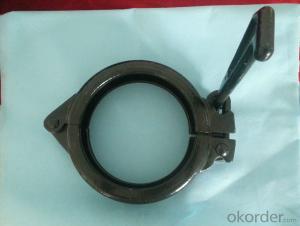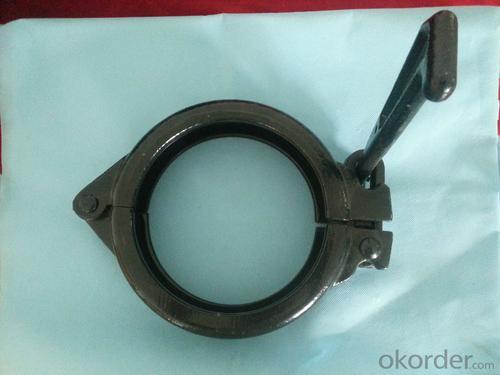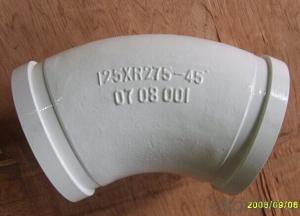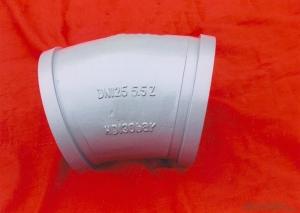Concrete Pump Clamp MF150 6
- Loading Port:
- China main port
- Payment Terms:
- TT OR LC
- Min Order Qty:
- 20 PCS
- Supply Capability:
- 1000 PCS/month
OKorder Service Pledge
OKorder Financial Service
You Might Also Like
Product Description:
A coupling is a device used to connect two delivery pieps together at their ends for the purpose of transmitting, and prevent the concrete from leaking. Couplings do not normally allow disconnection of shafts during operation.
Main Product Features:
1.Forged
2.2--8 inch
3.Galvanizing/Baking varnish
4.More durable,light,beautiful
Production steps:
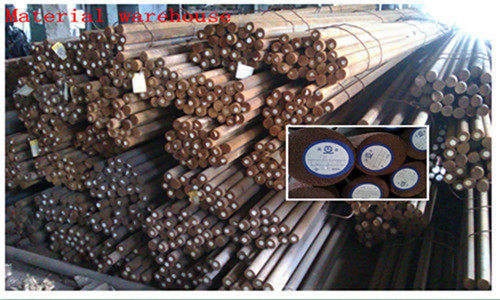
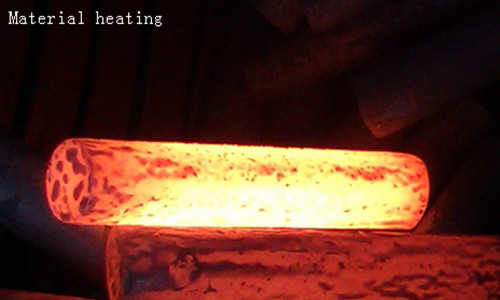
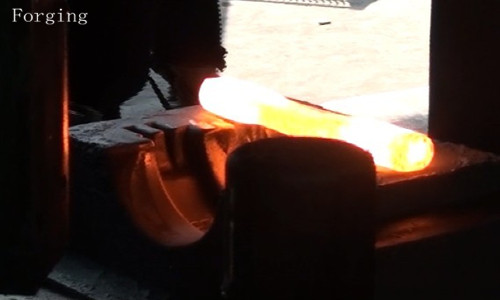
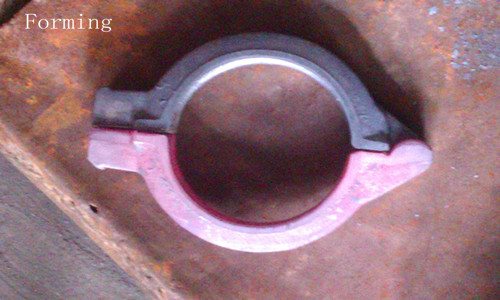
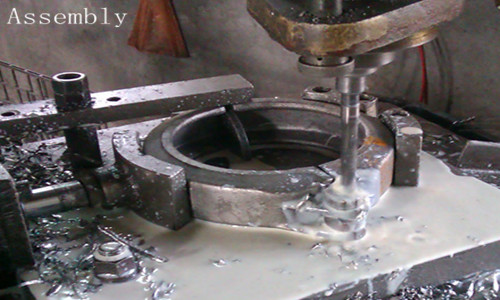
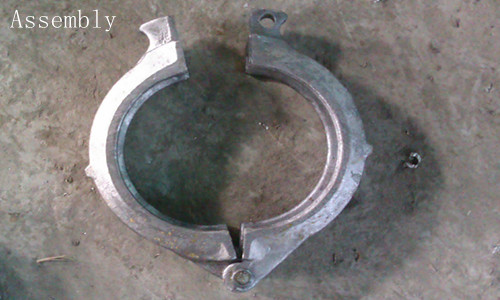
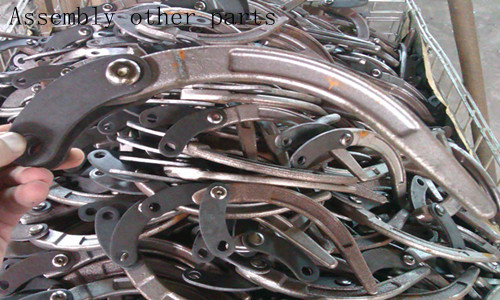
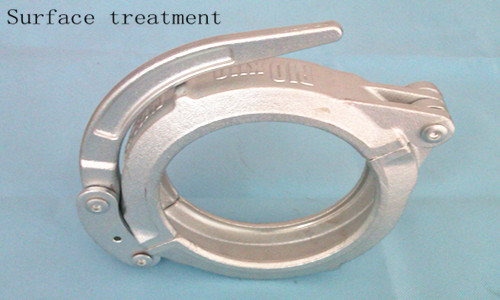
Concrete pump clamp Catalogue:
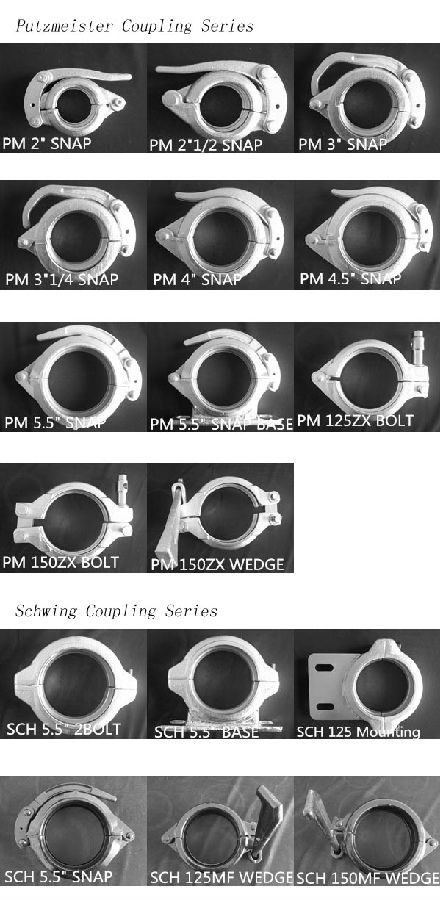
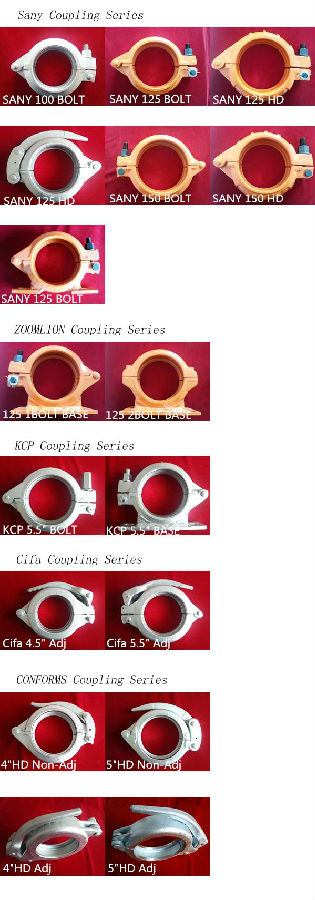
FAQ:
1.How do you regarding your product quality?
As our principle is more safety to save more. In China, there are lots of manufactures of this line, but we are the first one that use the forging technic in producing, firmly meet the PM standard.
2.Can I get some samples?
Of course you can. Small sample for free, but you pay the express. For some products are not small, like concrete pump pipe, it’s very difficult to deliver one pipe of 3000mm. If it’s possible, we’d like that you can come here to visit our factory. Welcome!
3. I want to make our logo on the products, is that ok?
Yes, it’s totally ok. OME is available from us.What you should do is send your logo, brand name, or picture to us. And let other things leave on us.
- Q: Are there any specific guidelines for the installation of hopper components or agitators in concrete pump spare parts?
- Yes, there are specific guidelines for the installation of hopper components or agitators in concrete pump spare parts. These guidelines typically include instructions on proper alignment, securing of bolts, lubrication, and ensuring all components are properly connected. It is important to follow these guidelines to ensure safe and efficient operation of the concrete pump.
- Q: Are there any specific maintenance practices for concrete pump spare parts?
- Concrete pump spare parts should be regularly inspected for signs of wear or damage. This involves checking for visible defects like cracks, leaks, or any other issues. If any problems are found, the spare parts should be immediately replaced or repaired to prevent further damage. Regular cleaning is also essential for concrete pump spare parts. These parts often come into contact with cement, water, and other substances that can cause build-up and affect their performance. Cleaning them regularly will remove debris and residue, ensuring optimal functionality. Lubrication is another important maintenance practice for concrete pump spare parts. Properly lubricating moving components like bearings, seals, and pistons reduces friction and wear, extending the lifespan of the parts. It's crucial to use the correct lubricants recommended by the manufacturer and follow their application guidelines. Proper storage is also vital for maintaining spare parts. They should be stored in a clean, dry environment, away from chemicals or substances that could damage them. Additionally, spare parts should be protected from physical damage, such as being dropped or bumped. Lastly, it's recommended to adhere to the manufacturer's maintenance and replacement guidelines. Regular servicing and inspections by qualified technicians can help identify potential issues early on and prevent major breakdowns or failures. In summary, following specific maintenance practices like regular inspection, cleaning, lubrication, proper storage, and adherence to manufacturer's guidelines are crucial for ensuring optimal performance and longevity of concrete pump spare parts.
- Q: How often should hopper agitator shaft bearings be inspected or replaced in a concrete pump?
- The hopper agitator shaft bearings in a concrete pump should be inspected regularly, at least once every six months, to ensure proper functioning. However, the exact frequency of replacement would depend on the manufacturer's recommendations, the intensity of usage, and the condition of the bearings. It is crucial to monitor the bearings for any signs of wear, damage, or excessive vibration, as this can lead to equipment failure and potential safety hazards.
- Q: How often should hydraulic pumps be inspected or replaced in a concrete pump?
- Hydraulic pumps in a concrete pump should be inspected regularly, ideally every 500 hours of operation or at least once a year. However, the frequency of replacement depends on various factors such as the quality of the pump, maintenance practices, and the intensity of use. It is crucial to monitor the pump's performance, fluid levels, and any signs of wear or damage to determine if replacement is necessary.
- Q: How can a faulty agitator motor affect the concrete mixing process?
- The concrete mixing process can be significantly affected by a faulty agitator motor in several ways. To begin with, the rotation of the mixing drum, which is crucial for thoroughly blending all the ingredients in the concrete mix, is the responsibility of the agitator motor. If the motor is not functioning properly or is faulty, it can lead to inadequate mixing. This can cause inconsistencies in the concrete mixture, with certain portions being over-mixed while others are under-mixed. Consequently, the concrete may not achieve the desired level of strength, durability, or uniformity. Additionally, a faulty motor can cause irregular or insufficient agitation, resulting in the formation of lumps or clumps in the concrete mix. These lumps can have a negative impact on the quality of the final product as they can create weak spots or air pockets within the concrete. Moreover, the presence of lumps can compromise the overall workability of the mix, making it more challenging to handle and place. This, in turn, can affect the efficiency and productivity of the construction project. Moreover, an uneven distribution of materials within the mixing drum can occur due to a faulty agitator motor. This can cause variations in the proportions of aggregates, cement, water, and additives, all of which are crucial for achieving the desired properties of the concrete. Inconsistent material distribution can result in concrete with inadequate compressive strength, reduced durability, and increased susceptibility to cracking or other forms of damage. Lastly, a malfunctioning agitator motor can lead to increased mixing time as it may take longer to achieve the desired level of homogeneity in the concrete mix. This can have an impact on the overall productivity of the concrete mixing process, resulting in delays in construction schedules and increased costs. In summary, a faulty agitator motor can have a significant impact on the concrete mixing process. It can lead to inadequate mixing, the formation of lumps, uneven material distribution, and increased mixing time. All these factors can contribute to a decrease in the quality of the final concrete product, compromising its strength, durability, workability, and overall performance.
- Q: How can a faulty battery affect the operation of the pump?
- The operation of a pump can be significantly affected by a faulty battery. Firstly, inadequate power supply from a faulty battery can lead to slow or weak pumping action. This can result in the pump's inability to generate the required pressure or flow rate, causing inefficient or ineffective operation. Moreover, intermittent power supply caused by a faulty battery can cause inconsistent pumping action, with the pump starting and stopping unpredictably. These interruptions can create inefficiencies, diminish the pump's performance, and potentially harm the equipment or system being operated. Furthermore, a faulty battery may have a limited charge retention capacity. This can restrict the pump's operating time, necessitating frequent recharging or battery replacement. In situations where continuous or prolonged pump usage is necessary, a faulty battery can disrupt operations, resulting in downtime and reduced productivity. Additionally, the overall lifespan of the pump can be affected by a faulty battery. If the battery fails to consistently provide the required power, the pump may experience strain or excessive wear, potentially shortening its operational life. In conclusion, a faulty battery can have numerous unfavorable effects on the operation of a pump, including reduced performance, inconsistent pumping action, limited operating time, potential damage, and decreased equipment lifespan. It is crucial to conduct regular maintenance and promptly replace faulty batteries to ensure optimum pump performance and longevity.
- Q: How can I determine if the concrete pump cylinder needs replacement?
- To determine if the concrete pump cylinder needs replacement, you should inspect it for any visible signs of wear or damage. Look for cracks, leaks, or excessive corrosion on the cylinder. Additionally, monitor the pump's performance and check if there are any irregularities or issues during operation, such as decreased pumping efficiency or increased noise. It is also recommended to consult with a professional concrete pump technician or manufacturer for a thorough inspection and assessment of the cylinder's condition.
- Q: Do concrete pump spare parts come with a warranty?
- Certainly, a warranty is provided for concrete pump spare parts. The duration of the warranty may differ depending on the manufacturer and the specific part being acquired. Typically, well-established manufacturers and suppliers offer warranties on their spare parts to instill confidence in customers regarding the product's quality and dependability. It is crucial to thoroughly examine the warranty's terms and conditions to comprehend the coverage and duration. Should any flaws or complications arise within the warranty period, customers can usually obtain a replacement or have the part repaired without incurring any additional expenses.
- Q: How can a faulty concrete pump control valve affect the pumping operation?
- The pumping operation can be adversely affected by a defective control valve for the concrete pump. To begin with, it can result in a lack of control over the rate at which the concrete flows. The control valve is responsible for regulating the quantity of concrete being pumped, and if it is faulty, it may not be able to adjust the flow rate accurately. This can lead to an inefficient operation due to an excessive or insufficient amount of concrete being pumped. Moreover, an unreliable control valve can cause inconsistent flow of the concrete. The valve is designed to maintain a steady and consistent flow, but if it is not functioning properly, it can cause fluctuations in the flow. As a consequence, the concrete may be distributed unevenly, thus affecting the quality and integrity of the pumped concrete. Additionally, a faulty control valve can contribute to accelerated wear and tear on the pump and other components. When the valve does not operate correctly, it can subject the pump to excessive pressure or strain, resulting in increased wear on the equipment. Consequently, breakdowns may occur more frequently or repairs may be needed, which can be both time-consuming and expensive. On the whole, a defective control valve for the concrete pump can have a significant impact on the pumping operation by causing a loss of control over the flow rate, inconsistent flow of the concrete, and increased wear and tear on the equipment. It is crucial to regularly inspect and maintain the control valve to ensure its proper functioning and prevent these negative consequences.
- Q: Can a concrete pump pipe be repaired or should it be replaced?
- Repairing a concrete pump pipe is possible in certain cases, but the ultimate outcome relies on the level of damage and the particular circumstances involved. Specialized techniques like welding or epoxy injections are often sufficient for minor cracks or small areas of damage. However, if the damage is extensive, severe, or jeopardizes the pipe's structural integrity, it may be more practical and safer to replace the entire pipe. Before making a decision between repair or replacement, it is crucial to thoroughly evaluate the condition of the concrete pump pipe. Factors such as the pipe's age, the overall pump condition, and the frequency of use should be taken into account. Consulting a professional or an experienced concrete pump technician is recommended to determine the most suitable course of action. In conclusion, while it is possible to repair a concrete pump pipe, the choice between repair and replacement should be based on factors including the extent of damage, cost-effectiveness, and safety considerations.
Send your message to us
Concrete Pump Clamp MF150 6
- Loading Port:
- China main port
- Payment Terms:
- TT OR LC
- Min Order Qty:
- 20 PCS
- Supply Capability:
- 1000 PCS/month
OKorder Service Pledge
OKorder Financial Service
Similar products
Hot products
Hot Searches
Related keywords
